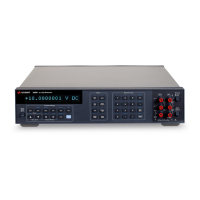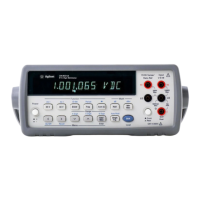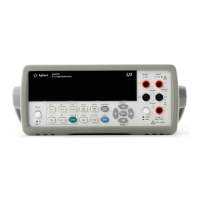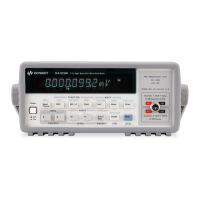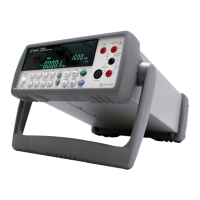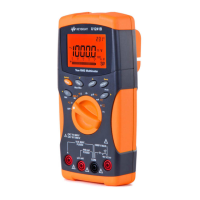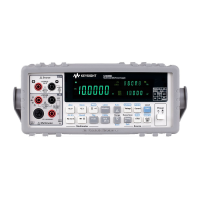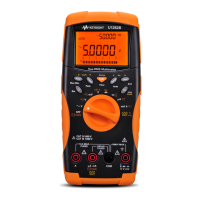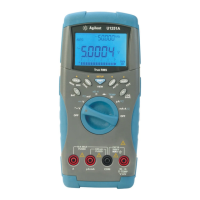114 34410A/11A/L4411A User’s Guide
4 Measurement Tutorial
The measurement cycle consists of two parts: a charge phase (shown in the
graph) and a discharge phase. The time–constant during the discharge phase
is longer, due to a 100 kΩ protective resistor in the measurement path. This
time–constant plays an important role in the resultant reading rate
(measurement time).
The incremental times (or “sample times”) as well as the width of the “short
apertures”, vary by range, in order to minimize noise and increase reading
accuracy. The following table lists the current amplitude, peak voltage and
average dc voltage developed across the capacitor during the measurement.
These values all vary by range. Control of the peak voltage across the capacitor
is important in some cases, such as when measuring larger electrolytic
capacitors.
The values of capacitance and loss resistance measured with the multimeter
may differ from the values measured using an LCR meter. This is to be
expected since this is esentially a dc measurement method, while LCR
measurement uses applied frequencies anywhere from 100 Hz to 100 kHz. In
most cases, neither method measures the capacitor at its exact frequency of
application.
The 34410A/11A/L4411A provides five capacitance ranges from 1 nF to 10
μF.
The voltage developed across the capacitor being measured is limited to less
than 10 V. The multimeter’s measurement accuracy is 0.4% of the reading, +
0.1% of the range in use (except for the 1 nF range, for which the accuracy is
0.5% of the reading, + 0.5% of the range).
Example:
For a 5 nF capacitor, measured using the 10 nF range, the accuracy
is (0.4%)(5 nF) + (0.1%)(10 nF) = 30 pF total error possible.
For the best accuracy, take a zero null measurement with open probes, to null
out the test lead capacitance, before connecting the probes across the
capacitor to be measured.
Range Current
Source
Reading Rate
at full scale
Reading Rate @
10% of full scale
Applied
Voltage
Approx. dc bias
@ full scale
1 nF 500nA 5/second 12/second 5V 2V
10 nF 1μA 5/second 24/second 5V 2V
100 nF 10μA 5/second 26/second 4V 2V
1 μF10μA 2/second 18/second 1.5V 1V
10 μF100μA 0.3/second 2.5/second 1.5V 1V
UG_ED5.book Page 114 Thursday, March 1, 2012 11:28 AM
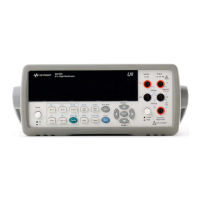
